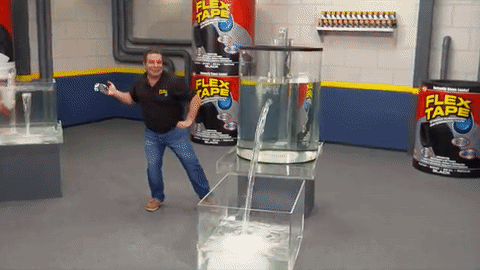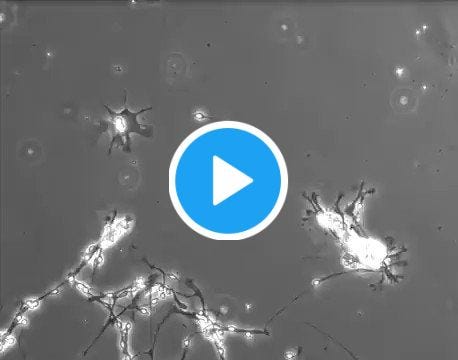Hello and welcome to another edition of my newsletter. My name is Lenny, and each week I tackle reader questions about product, growth, working with humans, and anything else that’s stressing you out at the office. Send me your questions and in return, I’ll humbly offer actionable real-talk advice. 🤝
If you find this newsletter valuable, consider sharing it with friends 🤜🤛
Q: A lot is written about driving traffic to a website, but not so much about how to convert that traffic into customers. Any best practices you can share? What had the most impact on conversion at Airbnb?
Increasing conversion (a.k.a fix the “leaks” in your funnel, get it?) is one of the highest ROI investments a growth team can make, particularly once you’ve got your top-of-funnel growth engines (e.g. paid, SEO, referrals) up and running. Not only do conversion improvements make your existing growth channels more efficient, the wins last forever (…or at least until you decide to redesign everything).
When thinking about conversion, there are two places you can focus:
Keeping users in the flow
Bringing users back into the flow
Let’s go through these individually.
1. Keeping users in the flow
When I approach optimizing a funnel, I generally focus on three levers:
Maintain user focus as they move through your flow 🧐
Maintain user motivation as they move through your flow 🤗
Reduce user friction so that they can easily move through your flow 😄
You and your team can leverage the above framework by coming up with ideas within each of these three levers, and then testing out your favorites. My advice is to experiment with as many ideas as you can, vs. betting on just a few amazing ideas.
If running experiments isn’t possible at your scale (you can use this handy calculator to get a sense), my advice is to do your due diligence (e.g. talk to users, evaluation upside, etc.), but then feel comfortable trusting yourself to go with your best guesses.
Airbnb has an incredibly strong culture of experimentation and iteration, and the volume to support it. By the time I left, we had hundreds of experiments running at any given time. From that experimentation, here are some of the biggest conversion wins at Airbnb, that I’m familiar with (by lever):
Lever 1: Maintain user focus 🧐
Opening listings in a new tab: When you click on an Airbnb listing (in search, from the home page, etc.), it always opens up in a new tab. Why? We found that helping a user avoid losing track of all of their options helps them continue exploring, especially if that first listing didn’t work out. This turned out to be one of the biggest conversion wins 🤷♂️
Neighborhoods: In late 2012, Airbnb launched a product called “Neighborhoods” which offered users incredibly rich and unique content about individual neighborhoods around the world. Visitors loved it. Almost too much. It turned out the content was so interesting that it distracted visitors from actually booking. When the team removed it from the home page, bookings went up.
Setting dates: When you search for a place to stay on Airbnb, you’re encouraged to input the dates for your trip. Though that introduces a tiny bit of friction, it turns out that by restricting your results to homes that are actually available during your trip, you avoid distracting users with better but unavailable options. Adding this prompt had a big impact.
Lever 2: Maintain user motivation 🤗
Scarcity: Giving users a reason to act now, by conveying a sense of scarcity (e.g. this property is usually booked), is a powerful motivator and a big conversion opportunity.
Highlights: Reminding users what’s great about the property they’re booking (e.g. the location, the amenities, the price) helps them avoid reconsidering and bailing, leading to great conversion wins.
What’s my place worth: On the host side, the primary motivation for becoming a host is income. Thus, making this value-prop prominent not only on the host landing page, but also throughout the entire new-host-flow (and follow-up emails), was impactful.
Lever 3: Reduce user friction 😄
Instant Book: By far the biggest friction to booking on Airbnb has always been the host approval process. Over the years, as the platform shifted to predominantly Instant Book, guest conversion significantly increased as a result.
Smart defaults: When you can’t remove steps from a flow, the next best thing is to set smart default answers. For example, as a new host, listing your home involves dozens of questions — your availability, your price, your listing title. We found a lot of success in setting smart default answers (or recommended answers) to as many of these questions as possible, making it easy for new hosts to move through the flow efficiently.
Performance: Slow page/app performance is one of the worst types of friction. It frustrates users, has nothing to do with your actual product, and is often invisible to your team. Though it won’t always work, and it’s often time-consuming to fix, we saw improvements in performance make a big dent in conversion, particularly on mobile.
No matter how great your flow is, users will bounce, so let’s talk about bringing them back.
2. Bringing users back into the flow
Most of your bounced users won’t actually want what you’re selling (sorry). But, a significant percentage of bounced users are just not ready to buy right then, or got distracted by another task, or got confused by your flow. This latter group of users is the users you want to target with a re-engagement strategy.
There are two key questions to consider when attempting to re-engage users:
WHAT can you tell them to convince them to try again?
HOW do you reach them?
WHAT to tell bounced users
The three core content strategies for re-engaging users (though there are probably more):
A reminder: You tried to do this thing and you didn’t finish. Want to finish?
Something has changed: Since the time you tried to book, prices have come down. Want to try again?
There’s more information: Looks like you stopped at this step — did you know that it’s optional?
At Airbnb, we had the most success with:
Reminding hosts a guest is waiting for a response
Reminding visitors that a home they were looking at was still available
Changes in market conditions (e.g. homes are getting booked)
Changes to prices (e.g. this listing is now cheaper)
Letting new hosts know they were only X steps away from becoming a host
Think about what value you can provide your users that would give them a good reason to try again.
HOW to reach bounced users
And finally, having a great message is one thing, but getting to your users is another. There are essentially only three re-engagement channels:
Emails/push notifications: Simple, effective, but easy to abuse.
Retargeting: Paid ads that target site visitors.
Calls: Calling prospects that have dropped off.
At Airbnb, we employed all three, but mostly email and retargeting. Both were extremely effective, early-on and at scale.
To go deeper, here are a few articles I recommend:
A/B Testing by Julian Shapiro
Conversion Rate Optimization by Moz
The Conversion Optimization Rulebook by Unbounce
Psych’d: A new user psychology framework for increasing funnel conversion by Darius Contractor
13 Examples of Re-Engagement Emails by HubSpot
Now go fix those leaks.

Inspiration for the week ahead 🧠
Read: How pollution is improving around the world


Watch: 100% guarantee to make you happier. Also, prepare to tear up starting at the 8:00m mark.
Learn: A short video showing what happens when you form a memory
That’s it for this week!
🚨 REMINDER 🚨
Starting next week, only paid subscribers will receive this newsletter weekly. For everyone else, you’ll still get the same great newsletter, but only about once a month (if that works for you, all good!).
✨Subscribe in the next 24 hours and lock in 20% off for the full year ($120 for the year, or $12/month) ✨
Sincerely,
Lenny 👋








Hey Lenny! How to increase conversion if it's a new product and the users need to be "educated"?
Nice one Lenny! These are so informative. I reference them all the time.